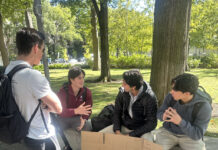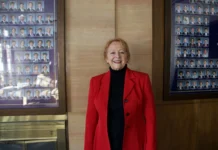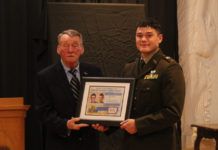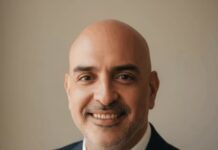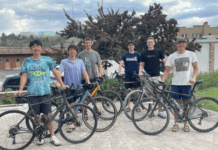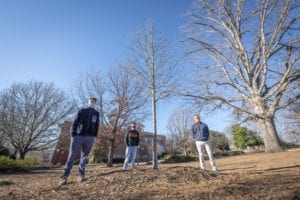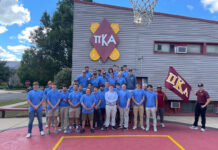When Pi Kappa Alpha fraternity cancelled its biggest annual philanthropy event last year due to the pandemic, treasurer Kenneth Lindsey suggested using the $8,000 in the philanthropy account to replace campus trees lost to disease or construction.
“After walking around campus for the past couple years, I have seen many large trees cut down. I also have seen many old photos of the University in which I noticed that the once very heavily connected canopy that used to cover the University is not as it once was,” he wrote to University Facilities to ask about making the donation.
Campus Arborist Paul Minerva welcomed the gift. “Their generosity is blowing me away,” he said. “To have someone offer a solution, and such a generous one, it was very nice. It was hard to believe.”
The fraternity bought 20 trees from Select Trees in Crawford, Georgia, which heavily discounted them because of the donation and even shipped them free.
The trees aren’t little saplings you could buy at the local home improvement store; they are 20 to 25 feet tall with four-inch caliper trunks and include bald cypresses, willow oaks and red maples.
Lindsey, a biochemistry major who grew up in Charleston and spent his childhood “climbing a live oak and jumping into the marsh,” said, “Something that makes the Upstate and Clemson special is the connected canopy – how it makes it feel like being in the woods. With the necessary construction of buildings and roads, we’ve lost a little of that.”
Also affecting the canopy of campus trees is the population of aging trees having to be felled because they pose safety threats because of rot or disease. “Unfortunately, you have to remove trees that could fail and hurt people,” Minerva said.
He and his crew of arborists plant young trees on campus to replace the ones that had to be cut down, but sometimes it’s not possible to plant in the same locations due to construction or the placement of underground utilities.
Lindsey had some places in mind for the new trees and worked with Minerva’s team and Barry Anderson, campus landscape architect with University Facilities Planning & Design, to select them. One was planted at Fort Hill to replace a large white oak lost to disease; another near Tillman Hall to help fill space when an at-risk tree has to come down in a few years.
Anderson said the gift of the trees is “something that’s going to yield dividends in terms of campus experience, campus life, campus aesthetics, the health of the campus… this is going to yield dividends for us for years to come.
“When you go to a university campus, there is an expectation to be buying into a way of thinking, a philosophy, a goal that other people have in common with your own, and to grow, and the place, the environment, sets the stage for that,” Anderson continued.
“There’s a degree of, ‘I’m in a place to complete a significant thing in my life, to face a challenge and complete something that’s really important.’”
Lindsey hopes the fraternity will continue to gift trees to the University in the future.
“In the future, if that could be one of our legacies, that would be pretty cool,” he said. “We can provide sustainable trees that will be here when my kids are here, or grandkids. I thought that would be cool if you came back in 50 or 60 years and we could say, ‘Yeah, we did plant these trees.’”



